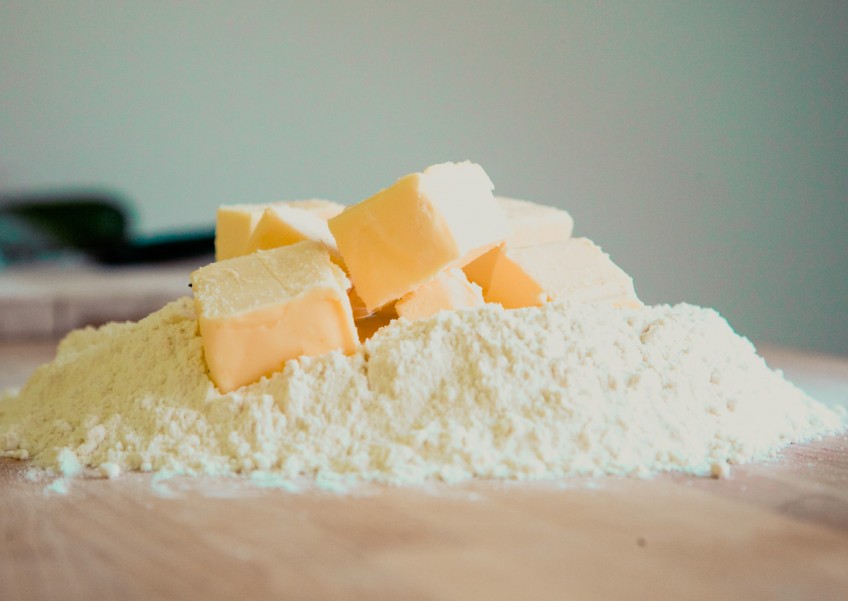No butter better than the familiar taste of childhood


I have been thinking a lot about butter recently.
Not just as a food item, but also as a barometer of consumer culture and changing social norms.
This line of thought was sparked in part by a marathon session of the Japanese television series Midnight Diner.
The show, set in a tiny Shinjuku eatery which opens from midnight to 7am, features a dish as the central motif of each episode.
Each dish is a gustatory cue to the character who consumes it, offering sensory triggers to memories and motives, a la the tea-dipped madeleine of French writer Marcel Proust's epic novel, Remembrance Of Things Past.
One featured dish caught my attention: Butter rice, a simple bowl of plain, hot rice with a pat of butter melted into it, and stirred up with some soya sauce.
The characters who ate this dish hailed from Hakodate in Hokkaido.
I was intrigued by this mash-up of Western and Japanese cuisines, and figured that it had something to do with the fact that Hokkaido is the dairy capital of Japan.
The fact that the characters are senior citizens and the script's mention of the dish as a childhood dish also led me to speculate that the dish was probably something of a treat in post-war Japan, when food supplies were low and butter a prized commodity.
A Google search for butter rice turned up only two scant blog entries, both of which agreed that the dish was a regional speciality eaten by people from Hokkaido.
But I could find no support for my conjecture about its origin as a luxury item that grew out of post-war deprivation.
Perhaps that was a leap of logic, but I would like to think the notion is not so farfetched, drawing a parallel with the kopi gu you (coffee butter, literally) I remember from my childhood.
Growing up in my dad's neighbourhood kopitiam, I was both horrified and intrigued when elderly uncles and aunties ordered kopi gu you, a piping hot cup of black coffee with a triangle of SCS butter oozing into the beverage.
And it had to be proper butter, not the Planta margarine that usually accompanied kaya on the charcoal-grilled toast for breakfast.
My dad's shop was located at the foot of a block of one-room flats in Whampoa Drive.
For these regulars, butter was still perceived as a Western food item, consumed infrequently, bought even more rarely.
Kopi gu you, which cost an extra 10 cents, was a little cup of indulgence, an affordable sample of Western luxury.
This memory of kopi gu you was stirred up again in recent years by the fad for bulletproof coffee, credited as the creation of American entrepreneur Dave Asprey who posted the recipe on his blog in 2009.
I rolled my eyes at what I saw as a hipster fad.
The kopi gu you I knew was gussied up in Asprey's recipe with specifications for "unsalted grass-fed butter", the addition of medium-chain triglyceride (MCT) oil, and coffee brewed from "low toxin beans".
So I was chuffed when I recently read renowned Bibendum chef Claude Bosi's interview with The Telegraph newspaper, in which he recommended kopi gu you as a Singapore speciality. Take that, bulletproof coffee.
But even as I scoffed at what I saw as hipster pretension over butter coffee, I am guilty of buying into a different kind of gastronomic snobbery about butter.
I'm an Echire fan who once stood in line at Maison de Beurre, the Echire bakery in Tokyo, so that I could try its famed croissants, madeleines and financiers made with the butter.
I am also a recent convert to Bordier butter after friends presented me with two blocks as a gift.
Both these French butters are silkily creamy and richly flavoured in ways that elevate a simple piece of toast to lush decadence.
Once a regional speciality known only to locals, they have become - thanks to the age of Internet, jet travel and foodie fetishisation - coveted gourmand treats worldwide.
While not exactly conspicuous consumption, French butters are a gastronomic luxury afforded by only a small demographic with both the economic means and the cultural privilege to access this foodstuff.
Ironically, when I bake at home, I turn back to the simple brand of my childhood, SCS.
My mother baked plain butter cakes and simple cookies with blocks of SCS butter and it is still the best butter for the crumbly pineapple tarts my family makes for Chinese New Year.
Other "better" butters somehow fail to replicate the taste and textures of my mother's bakes.
SCS is the only brand with the correct "buttery" flavour and fragrance that instantly takes me back to my mum's kitchen.
Which brings me back to the episode of Midnight Diner that started it all.
The story was a reminder that the simplest dishes often prove to be the most deeply, deliciously resonant.
At the same time, foods that we take for granted can also carry complex origin stories that tell us things about social and economic histories.
sorfern@sph.com.sg

This article was first published on April 18, 2017.
Get a copy of The Straits Times or go to straitstimes.com for more stories.